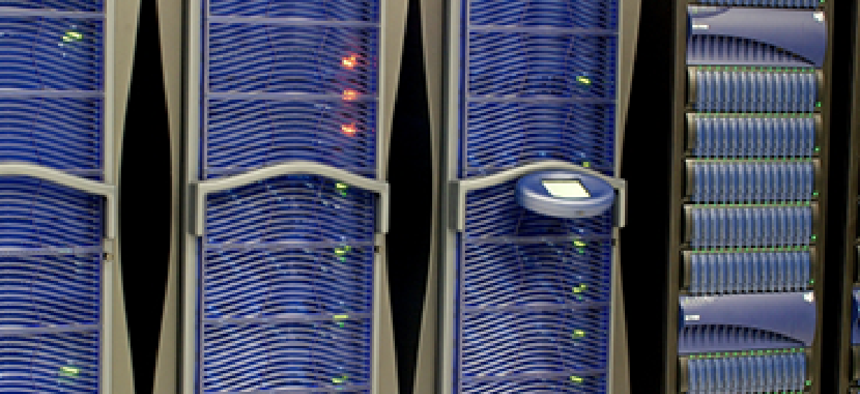Civilian agencies outpace DOD for spending on ongoing IT maintenance

GAO: Agencies spent 70 percent of a $79 billion IT budget on existing systems in 2011.

Servers like these at NASA account for some of the money agencies spend on existing systems.
Overall, federal agencies spend about the same percentage of their budgets to operate and maintain existing IT systems as leading companies do, but the numbers go up when the Defense Department is taken out of the equation.
According to a Government Accountability Office report, 26 agencies spent 70 percent of a collective $79 billion IT budget on existing systems and the remaining 30 percent on developing new systems in 2011. Those percentages are on par with what leading companies spend, said Doug Bourgeois, vice president and chief cloud executive for the U.S. public sector at VMware.
Citing multiple surveys, including one by VMware, Bourgeois said private-sector organizations tend to spend about 70 percent of their IT budgets on “keeping the lights on” while some “very advanced” companies have brought operations and maintenance spending to 60 percent of their budgets and below.
“The private sector is a little bit ahead, maybe a 10 percent difference,” Bourgeois said.
But the federal IT budget is skewed by the Defense Department’s spending on IT development.
DOD accounted for $37 billion — almost half — of the federal government’s IT spending. It spent about 63 percent of its IT budget on maintaining existing systems, while most other agencies spent around 80 percent. For instance, the State Department spent 93 percent of its IT budget on operation and maintenance, while NASA spent 90 percent, the Treasury and Agriculture departments each spent 84 percent, the Department of Health and Human Services spent 75 percent, and the Department of Veterans Affairs spent 69 percent.
Bourgeois said the nature of DOD’s investments might help explain why it is able to spend more on development than most other agencies.
Dante Ricci, a senior director at SAP, said one reason agencies lag on development spending is because they are governed by policies that commercial entities don’t have and therefore tend to take a more methodical approach to innovation than companies do.
“Commercial organizations are less tethered to specific requirements and policy than federal agencies; therefore, they can innovate a bit more freely,” Ricci said.
The government has made some efforts to reduce its legacy spending, including the Federal Data Center Consolidation Initiative, and Ricci said it is obvious that agencies are trying to find ways to spend less money on old systems.
“I’m not sure if the policy has caught up with the mind-set,” he said, adding that the government’s slower, methodical approach could be beneficial because it gives some technologies a chance to mature before agencies make use of them.
Nevertheless, slow and steady doesn’t always win the race, Ricci said.
“Sometimes agencies lose out on the innovation curve that would have given them extra value, too,” he said.
NEXT STORY: 5 steps to take command of mobile






